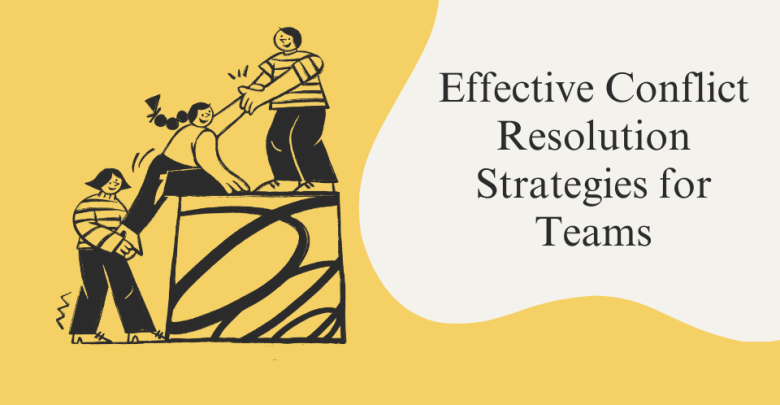Effective Conflict Resolution Strategies for Teams

Conflict within teams is a natural occurrence that arises from differing perspectives, personalities, and work styles. However, when managed well, conflict can drive innovation and improve relationships. Here are some effective strategies for resolving conflicts in a team setting.
You can read more article :
- Effective Communication Skills: Strategies to Enhance Your Interpersonal Skills
- 10 Essential Time Management Tips for Increased Productivity
Cultivate a Culture of Transparency
Establishing a culture where team members feel comfortable expressing their thoughts can significantly reduce conflict. This begins with transparent communication—encourage team members to share their ideas and concerns openly. Implement regular team meetings where everyone has a chance to voice their opinions, ensuring that all members feel heard and valued.
Practice Active Listening
Listening is as crucial as speaking when resolving conflicts. Encourage team members to practice active listening, which involves fully concentrating on the speaker, understanding their message, responding thoughtfully, and remembering key points. This approach helps prevent misunderstandings and promotes empathy among team members, facilitating a smoother resolution process.
Embrace Diverse Perspectives
Different viewpoints can be a source of conflict, but they can also lead to creative solutions. Encourage team members to share their unique perspectives during conflicts. Create an environment where diversity is celebrated, and differences are seen as opportunities for growth rather than points of contention. This practice can foster innovation and deeper understanding within the team.
Define Clear Conflict Resolution Processes
Having a clear process for resolving conflicts can streamline discussions and reduce anxiety among team members. Outline specific steps for conflict resolution, such as identifying the issue, discussing possible solutions, and agreeing on the best course of action. When everyone understands the process, it can help demystify conflict resolution and make it more manageable.
Focus on Interests, Not Positions
Encourage team members to look beyond their positions in a conflict and identify their underlying interests. This shift can open up new avenues for negotiation and compromise. For instance, instead of insisting on a specific solution, team members can express what they hope to achieve, allowing for more flexible and collaborative outcomes.
Facilitate Collaborative Problem-Solving
Instead of framing conflicts as win-lose situations, encourage a collaborative problem-solving approach. This involves working together to find a solution that satisfies all parties involved. Use brainstorming sessions to generate multiple options, fostering creativity and cooperation. Emphasizing teamwork can turn potential conflicts into opportunities for team building.
Implement Regular Conflict Check-Ins
This Consider conducting regular conflict check-ins to address any simmering issue before the escalate. These can be brief, informal discussions that allow team members to express concerns and offer feedback. By addressing minor conflicts early, you can prevent larger issues from developing and maintain a positive team atmosphere.
Seek External Mediation When Necessary
In cases where conflicts are deeply entrenched or involve significant emotional stakes, it may be beneficial to bring in a neutral third-party mediator. This person can help facilitate discussions and provide an unbiased perspective, allowing team members to feel safe expressing their viewpoints. External mediators can also help in navigating complex interpersonal dynamics that may be contributing to the conflict.
Reflect on the Resolution Process
After resolving a conflict, it’s valuable to reflect on the resolution process as a team. Discuss what strategies worked well and what could be improved for future conflicts. This reflection not only enhances team cohesion but also builds conflict resolution skills within the group.
Celebrate Resolution Achievements
Acknowledge and celebrate when conflicts are resolved successfully. Recognizing the efforts of team members reinforces positive conflict resolution behaviors and encourages a culture of collaboration. Celebrations can range from verbal recognition in meetings to team-building activities, fostering a sense of unity and accomplishment.
Effective conflict resolution is essential for maintaining a healthy team environment. By promoting open communication, active listening, and collaborative problem-solving, teams can transform conflicts into constructive discussions. Implementing these strategies not only enhances team dynamics but also contributes to overall organizational success. Embracing conflict as an opportunity for growth can lead to stronger relationships and a more engaged team.
